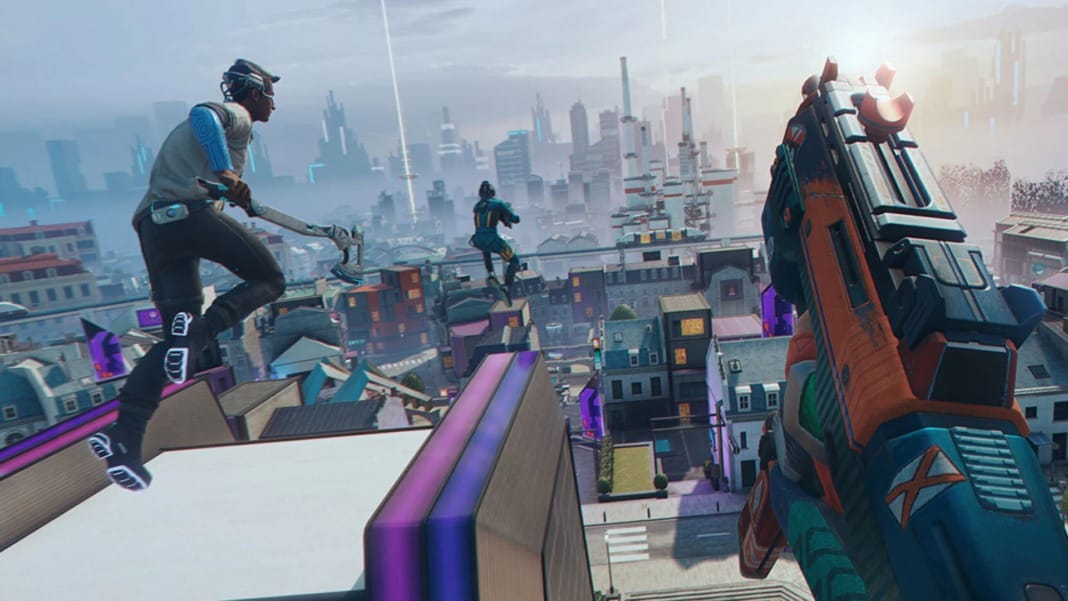In the fast-moving world of online games, some failures become cautionary tales. Sony’s Concord, a multiplayer shooter that lasted only a few weeks, has already taken on a near-mythical reputation. Others fade quietly, remembered by few and mourned by even fewer. Radical Heights is one of these overlooked titles – a short-lived experiment that vanished almost as quickly as it appeared, taking its studio down with it.
A last-ditch attempt to recover from an earlier flop
Radical Heights emerged in 2018, during a difficult period for Boss Key Productions. The studio, founded by Gears of War designer Cliff Blezinski and Guerilla Games co-founder Arjan Brussee, had failed to break into the competitive shooter market with LawBreakers. Despite the rising popularity of hero shooters driven by Overwatch, LawBreakers struggled commercially, leaving the studio in urgent need of a recovery plan.
That same year, the battle royale genre was transforming the multiplayer landscape. PlayerUnknown’s Battlegrounds had captured global attention, and Fortnite’s rise was only beginning. Seeing an opportunity, Boss Key rushed to develop its own take on the trend. Radical Heights was released in April 2018 in what the studio called “X-Treme Early Access,” well before it was ready for a full launch.
The game followed the familiar last-player-standing structure. Players dropped into a grid-like map, gathered weapons and equipment, and fought to survive until only one remained. What set it apart was its loud, colourful 1980s game-show theme, with characters competing in a retro-styled televised contest filled with neon visuals and exaggerated personality.
However, the hurried release was immediately noticeable. Key features were missing – at launch, players could not even choose a female character, with the option listed as “coming soon.” This added to the perception that the game was an unfinished attempt to cash in on a trend.
Creative ideas that hinted at real potential
Despite its rough edges, Radical Heights held unexpected promise. The core battle royale format was already proving compelling, allowing players to enjoy short, high-tension matches without long waits. The game was built on this foundation, with surprisingly tight gunplay and several inventive ideas that set it apart from its competitors.
One of its smartest innovations was its approach to sound. Standard battle royale rounds often included long stretches of silence, with any noise immediately revealing a player’s location. Radical Heights amplified this tension through features like prize doors. Players could unlock storage units containing valuable loot by standing on pressure panels, but doing so triggered a loud game-show tune that alerted everyone nearby to both the player’s position and the presence of high-value items. This created natural hotspots for firefights instead of encouraging players to hide and wait.
Other playful details added charm. Money collected during a match could be banked at an ATM and used in later rounds, adding light persistence between games. Inflatable decoys and other quirky equipment introduced a sense of strategic silliness absent in more grounded titles like PUBG. Movement was also more interesting, with players able to ride BMX bikes for fast, quiet travel around the map. Combined with flashy 1980s outfits, the game offered a distinctive personality that set it apart from the increasingly crowded genre.
A project that collapsed under the weight of its circumstances
Yet even with these strengths, Radical Heights could not survive its troubled debut. The game failed to attract enough players at launch, and the studio’s financial difficulties meant it had no time to refine or rebuild. Only one month after the game’s release, Boss Key Productions shut down entirely.
For many who tried it, the collapse felt inevitable. The early access version felt like a pre-alpha build, and microtransactions were introduced immediately, even though the game was unfinished. With goodwill already low after LawBreakers, players were hesitant to invest time or money. Within weeks, Radical Heights had gone offline, leaving the field open for Fortnite and other big-budget contenders to dominate the battle royale space.
Even so, the game left a small impression on those who saw its spark. Some players still remember its chaotic creativity fondly and wonder what might have emerged if Boss Key had more time and resources. At the height of the battle royale boom, many studios competed to reinvent the genre, but only the most polished survived. Radical Heights, messy and ambitious, remains a reminder of the many ideas that never had the chance to form fully.




